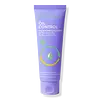What's inside
What's inside
 Key Ingredients
Key Ingredients

 Benefits
Benefits

 Concerns
Concerns

 Ingredients Side-by-side
Ingredients Side-by-side

Water
Skin ConditioningGlycerin
HumectantCoco-Betaine
CleansingSodium Chloride
MaskingPentylene Glycol
Skin ConditioningPropanediol
Solvent1,2-Hexanediol
Skin ConditioningXanthan Gum
EmulsifyingBetaine
HumectantPotassium Cocoyl Glycinate
Hydroxyethylcellulose
Emulsion StabilisingEthylhexylglycerin
Skin ConditioningCitric Acid
BufferingTartaric Acid
BufferingMandelic Acid
AntimicrobialOryza Sativa Extract
AbsorbentPhyllostachys Pubescens Shoot Bark Extract
Skin ConditioningButylene Glycol
HumectantZanthoxylum Piperitum Fruit Extract
Skin ConditioningPulsatilla Koreana Extract
Skin ConditioningUsnea Barbata Extract
Aspergillus Ferment
Skin ConditioningPanax Ginseng Root Extract
EmollientCyclodextrin
AbsorbentBeta-Glucan
Skin ConditioningWater, Glycerin, Coco-Betaine, Sodium Chloride, Pentylene Glycol, Propanediol, 1,2-Hexanediol, Xanthan Gum, Betaine, Potassium Cocoyl Glycinate, Hydroxyethylcellulose, Ethylhexylglycerin, Citric Acid, Tartaric Acid, Mandelic Acid, Oryza Sativa Extract, Phyllostachys Pubescens Shoot Bark Extract, Butylene Glycol, Zanthoxylum Piperitum Fruit Extract, Pulsatilla Koreana Extract, Usnea Barbata Extract, Aspergillus Ferment, Panax Ginseng Root Extract, Cyclodextrin, Beta-Glucan
Water
Skin ConditioningDisodium Cocoamphodiacetate
CleansingSodium C14-16 Olefin Sulfonate
CleansingNiacinamide
SmoothingSodium Chloride
MaskingPolyglyceryl-4 Caprate
EmulsifyingAcrylates Copolymer
Glycerin
HumectantPinus Densiflora Bark Extract
Skin ConditioningPinus Palustris Leaf Extract
TonicCamellia Sinensis Leaf Extract
AntimicrobialSea Water
HumectantZinc PCA
HumectantPueraria Lobata Root Extract
HumectantUlmus Davidiana Root Extract
Skin ConditioningAloe Barbadensis Leaf Extract
EmollientCeramide NP
Skin Conditioning1,2-Hexanediol
Skin ConditioningButylene Glycol
HumectantCitric Acid
BufferingOenothera Biennis Flower Extract
AstringentArginine
MaskingMelaleuca Alternifolia Leaf Extract
PerfumingCaprylyl Glycol
EmollientCaprylhydroxamic Acid
Eucalyptus Globulus Leaf Oil
PerfumingWater, Disodium Cocoamphodiacetate, Sodium C14-16 Olefin Sulfonate, Niacinamide, Sodium Chloride, Polyglyceryl-4 Caprate, Acrylates Copolymer, Glycerin, Pinus Densiflora Bark Extract, Pinus Palustris Leaf Extract, Camellia Sinensis Leaf Extract, Sea Water, Zinc PCA, Pueraria Lobata Root Extract, Ulmus Davidiana Root Extract, Aloe Barbadensis Leaf Extract, Ceramide NP, 1,2-Hexanediol, Butylene Glycol, Citric Acid, Oenothera Biennis Flower Extract, Arginine, Melaleuca Alternifolia Leaf Extract, Caprylyl Glycol, Caprylhydroxamic Acid, Eucalyptus Globulus Leaf Oil
 Reviews
Reviews

Ingredients Explained
These ingredients are found in both products.
Ingredients higher up in an ingredient list are typically present in a larger amount.
1,2-Hexanediol is a synthetic liquid and another multi-functional powerhouse.
It is a:
- Humectant, drawing moisture into the skin
- Emollient, helping to soften skin
- Solvent, dispersing and stabilizing formulas
- Preservative booster, enhancing the antimicrobial activity of other preservatives
Butylene Glycol (or BG) is used within cosmetic products for a few different reasons:
Overall, Butylene Glycol is a safe and well-rounded ingredient that works well with other ingredients.
Though this ingredient works well with most skin types, some people with sensitive skin may experience a reaction such as allergic rashes, closed comedones, or itchiness.
Learn more about Butylene GlycolCitric Acid is an alpha hydroxy acid (AHA) naturally found in citrus fruits like oranges, lemons, and limes.
Like other AHAs, citric acid can exfoliate skin by breaking down the bonds that hold dead skin cells together. This helps reveal smoother and brighter skin underneath.
However, this exfoliating effect only happens at high concentrations (20%) which can be hard to find in cosmetic products.
Due to this, citric acid is usually included in small amounts as a pH adjuster. This helps keep products slightly more acidic and compatible with skin's natural pH.
In skincare formulas, citric acid can:
While it can provide some skin benefits, research shows lactic acid and glycolic acid are generally more effective and less irritating exfoliants.
Most citric acid used in skincare today is made by fermenting sugars (usually from molasses). This synthetic version is identical to the natural citrus form but easier to stabilize and use in formulations.
Read more about some other popular AHA's here:
Learn more about Citric AcidGlycerin is already naturally found in your skin. It helps moisturize and protect your skin.
A study from 2016 found glycerin to be more effective as a humectant than AHAs and hyaluronic acid.
As a humectant, it helps the skin stay hydrated by pulling moisture to your skin. The low molecular weight of glycerin allows it to pull moisture into the deeper layers of your skin.
Hydrated skin improves your skin barrier; Your skin barrier helps protect against irritants and bacteria.
Glycerin has also been found to have antimicrobial and antiviral properties. Due to these properties, glycerin is often used in wound and burn treatments.
In cosmetics, glycerin is usually derived from plants such as soybean or palm. However, it can also be sourced from animals, such as tallow or animal fat.
This ingredient is organic, colorless, odorless, and non-toxic.
Glycerin is the name for this ingredient in American English. British English uses Glycerol/Glycerine.
Learn more about GlycerinChances are, you eat sodium chloride every day. Sodium Chloride is also known as table salt.
This ingredient has many purposes in skincare: thickener, emulsifier, and exfoliator.
You'll most likely find this ingredient in cleansers where it is used to create a gel-like texture. As an emulsifier, it also prevents ingredients from separating.
There is much debate on whether this ingredient is comedogenic. The short answer - comedogenic ratings don't tell the whole story. Learn more about comegodenic ratings here.
The concensus about this ingredient causing acne seems to be divided. Research is needed to understand if this ingredient does cause acne.
Scrubs may use salt as the primary exfoliating ingredient.
Learn more about Sodium ChlorideWater. It's the most common cosmetic ingredient of all. You'll usually see it at the top of ingredient lists, meaning that it makes up the largest part of the product.
So why is it so popular? Water most often acts as a solvent - this means that it helps dissolve other ingredients into the formulation.
You'll also recognize water as that liquid we all need to stay alive. If you see this, drink a glass of water. Stay hydrated!
Learn more about Water